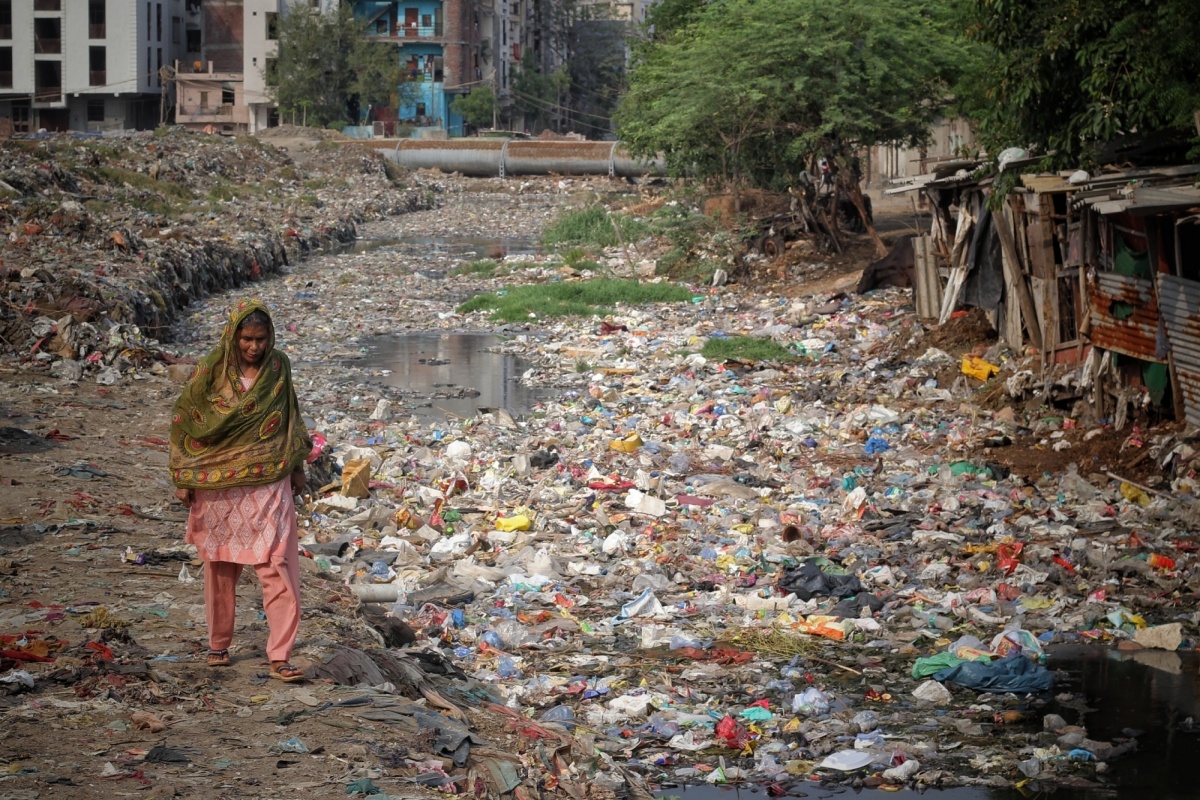Climate change is the long-term alteration of temperature and typical weather patterns in a place. The cause of the present climate change is largely human and industrial activities, like burning fossil fuels such as natural gas, oil, and coal.
Burning these materials releases what are called greenhouse gases into the Earth’s atmosphere. This over the decades has caused increase in atmospheric temperature of 1.2 degree Celsius compared with the pre-industrial era.
This increase in temperature is due to increased release of carbon dioxide in the atmosphere, as a result of industrial activities. If this is not checked, atmospheric temperature will further increase by 1.5 degree Celsius by 2030.
Advertisement
The effects of increase in average temperature on the planet will include an array of natural disasters ~ from forest fires, volcanic eruptions, storms and earthquakes to a rise in sea levels. On human behaviour, it is found that the results will be fire of rage, anger, resentment, depression, suicides, denial and indulgence.
They are playing havoc with mental and physical wellbeing of humanity. The causes for increase in CO2, resulting in the rapid rise in global temperature are many. Besides population explosion and decades of abject misuse of natural resources, there has been increase in demand for energy for industrial activities, resulting in increased use of fossil fuels such as coal, crude oil, natural gas, besides deforestation of land for industrial activities.
The recently concluded COP-26 conference held in Glasgow, UK, attended by the world’s leaders, deliberated on an urgent need to address the climate change crisis, which threatens human existence. COP stands for Conference of the Parties (countries) that signed the United Nations Framework Convention on Climate Change (UNFCCC) ~ a treaty that came into force in 1994. There is a need for countries to be Carbon Neutral which means balancing carbon emissions, that is “absorb the same amount of carbon that we emit” by planting more trees and adopting eco-friendly sustainable energy sources, or renewable energy.
The solution to the problem lies in replacing fossil fuels by renewable energy i.e., solar, hydro, bio-fuel, wind energy and green hydrogen. It lies in a switch to sustainable transport. Petrol and diesel vehicles, planes and ships use fossil fuels. Reducing car use, switching to electric vehicles and minimising plane travel will not only help stop climate change, but it will reduce air pollution too.
Equally, it is important to live in harmony with nature using ancient wisdom, and by having a lifestyle which is need based, and not greed based. There are three types of Hydrogen ~ Grey Hydrogen, Blue Hydrogen and Pink Hydrogen. Hydrogen is being produced for refineries and many other industrial uses by the process of steam reforming of natural gas.
This process for hydrogen is called grey hydrogen, because during hydrogen production, carbon dioxide is generated and released to the atmosphere. Hydrogen generated through the process of steam reforming along with Carbon capture of CO2 (Carbon sequestration) is named as blue Hydrogen.
Capture and utilisation of CO2 is expensive. Hydrogen produced using nuclear energy, it termed as Pink Hydrogen. There is another form of clean Hydrogen called Green Hydrogen which is produced by the Electrolysis of water by using renewable energy. No CO2 is evolved and thus this is called green hydrogen. India is uniquely placed as producer of the cheapest solar energy.
Thus, India could produce the cheapest green hydrogen not only for domestic consumption, but for global needs. There are several challenges that India faces with respect to technology, storage and transportation. India needs to develop new materials, electrolysis development, safety standards and a regulatory regime. Cost of production of green hydrogen is very high.
compound. Ancient wisdom could be the panacea for climate change. Mahatma Gandhi said, “Earth provides enough to satisfy every man’s needs, but not every man’s greed.” Ancient Wisdom shows the way to live in harmony with nature.
Mother Earth took billions of years to produce fossil fuels ~ coal, crude oil, natural gas. Now it must bid farewell to these sources and seek the help of the Sun to meet energy needs of her citizens, through solar energy and green hydrogen. The authenticity of ancient wisdom could be presented by spiritual masters to change the mindset of humanity on how to live in harmony with nature.
There are two important dates in human life, one is the date of birth and the other is when one is able to find out the ‘why’ of life. Certain important lessons must be learnt. Business should be beyond profit and loss; it should be for transforming lives. Need of the hour is to go for a circular economy i.e. to use and reuse.
Long before ecology started facing problems, the ancient Indic heritage had already provided a spacious spiritual home for the environmental ethos.
The Vedic, Jain, and Buddhist traditions established the principles of ecological harmony centuries ago through their quest for spiritual and physical symbiosis, synthesised in a system of ethical awareness and moral responsibility. The ancient sacred literature of the Vedas enshrines a holistic and poetic cosmic vision.
They represent the oldest, the most carefully nurtured, the most elaborately systematised, lovingly preserved oral tradition in the annals of the world. Unique in their perspective of time and space, their evocative poetry is a joyous and spontaneous affirmation of life and nature.
The Vedic Hymn to the Earth, the Prithvi Sukta in Atharva Veda, is unquestionably the oldest and the most evocative environmental invocation. In it, the Vedic seer solemnly declares the enduring filial allegiance of humankind to Mother Earth: ‘Mata Bhumih Putroham Prithivyah: Earth is my mother, I am her son.’ Mother Earth is celebrated for all her natural bounties and particularly for her gifts of herbs and vegetation.
Her blessings are sought for prosperity in all endeavours and fulfillment of all righteous aspirations. A covenant is made that humankind shall secure the Earth against all environmental trespass and shall never let her be oppressed. The Vedic seers regarded the Earth as ‘sacred space’ for the consecrated endeavours and aspirations of humankind and for the practice of restraint and responsibility.
This affirmative view of the inviolable sacred space in human consciousness is integral to the Vedas and the Upanishads. On it rests the Vedic vision of a world filled with the purity of the spiritual environment and the sanctity of environmental spirituality and morality.
We invoke and imbibe Aum, the primordial sound of cosmic Harmony and pray for Peace and Harmony in Heaven; Peace and Harmony in the Sky and on the Earth; Peace and Harmony in the Waters; Peace and Harmony in the Herbs, the Vegetation and the Forests; Peace and Harmony among the Peoples and the Rulers of the World; Peace and Harmony in Spiritual Quest and Realisation; Peace and Harmony for one and all; Peace and Harmony Everywhere and in Everything; Peace, True and Real Peace, Let that Peace repose in my inner space, Peace of Peace, Everlasting Peace, We pray for Peace
Advertisement












